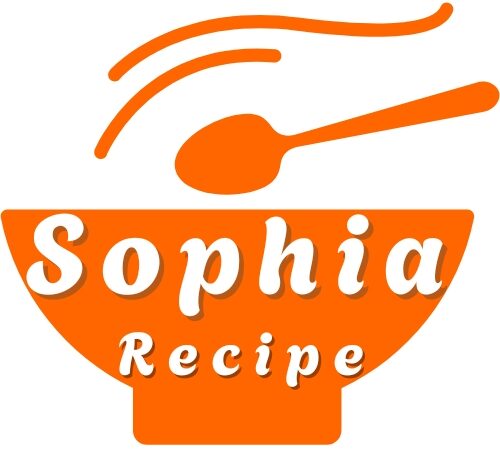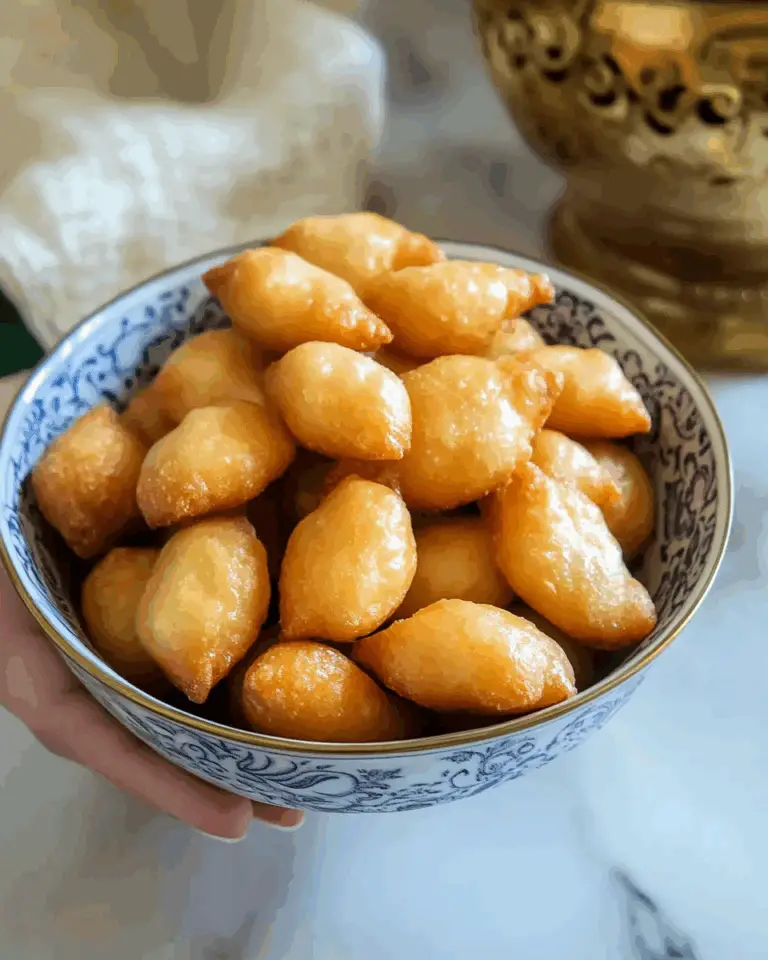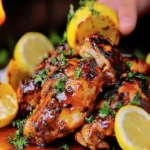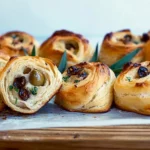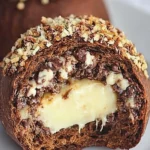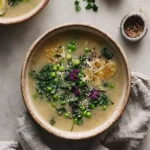Boortsog is a beloved traditional Mongolian cookie, often made at home and enjoyed with family, especially during festive occasions like Tsagaan Sar. These deep-fried treats are golden, slightly sweet, and wonderfully satisfying—perfect for pairing with a cup of Mongolian dumpling milk tea. This recipe uses condensed milk and butter for a rich, soft texture, making them a favorite among kids and adults alike.
Full Recipe:
Ingredients
-
8 cups all-purpose flour (1 kg)
-
3 cups warm water
-
½ can (about 7 oz) condensed milk
-
1 packet (8 g) active dry yeast
-
1 packet (9 g) vanilla sugar
-
½ cup sugar
-
1 cup unsalted butter
-
1 tsp baking powder
-
Pinch of salt
-
Canola oil or vegetable oil (for deep frying)
Directions
-
In a bowl, mix warm water with condensed milk, yeast, and butter. Stir until dissolved.
-
In a large mixing bowl, combine flour, salt, sugar, vanilla sugar, and baking powder. Mix well.
-
Add the wet mixture to the dry ingredients and knead into a soft dough (not too sticky or too firm).
-
Cover and let the dough rest in a warm place for 1–2 hours.
-
Once rested, roll out the dough and cut into desired shapes and thickness.
-
Heat oil in a deep fryer or heavy pan. Fry the dough pieces until golden brown, not too dark.
-
Drain on paper towels and let cool slightly before serving.
Nutrients (per serving, estimated for 1 cookie assuming ~36 cookies total)
-
Calories: ~180
-
Carbohydrates: ~22g
-
Fat: ~9g
-
Sugar: ~5g
-
Protein: ~3g
-
Sodium: ~60mg
Cultural Roots and Significance of Boortsog
In Mongolia, Boortsog is more than just a snack—it’s an essential part of the cultural fabric. For centuries, nomadic Mongolian families have made Boortsog in large batches to share with neighbors, travelers, and guests. During Tsagaan Sar, families prepare mountains of Boortsog and offer them on beautifully arranged platters, often accompanied by milk tea and dried curds. Sharing Boortsog is a way to celebrate community and continuity, symbolizing prosperity, family unity, and generosity.
This cookie is deeply woven into Mongolian hospitality rituals. No guest visits a home without being offered Boortsog and suutei tsai, the iconic salty milk tea with dumplings or butter. Its preparation, passed down through generations, is considered a communal activity, especially during holiday preparations, where even children get involved in shaping the dough.
Why You’ll Love Boortsog
Boortsog is simple, hearty, and utterly satisfying. The dough is soft and rich, thanks to the combination of butter and condensed milk. As it fries, it puffs up lightly, forming a tender interior with a golden, crisp shell. The flavor is mildly sweet with a buttery richness, making it perfect to pair with both sweet and savory drinks. It has a rustic charm and versatility that fits any occasion—from a cozy breakfast to a celebratory tea ceremony.
What makes Boortsog truly unique is its adaptability. While traditionally made with minimal ingredients, this version includes vanilla sugar and baking powder, offering a subtly fragrant lift and a softer texture. Whether you eat them plain, dip them in jam, or enjoy them with milk tea, Boortsog delivers comfort in every bite.
A Texture and Taste That’s Universally Loved
One of Boortsog’s most distinctive features is its textural balance—crispy edges with a fluffy, tender core. The condensed milk adds both moisture and sweetness, while the yeast contributes to a delicate rise and slightly airy structure. Butter enriches the flavor and gives the dough a melt-in-your-mouth quality that children especially adore. The result is a cookie that’s soft without being cake-like, and rich without being overly indulgent.
Because Boortsog isn’t overly sweet, it appeals to a broad range of palates. It can even be lightly sprinkled with powdered sugar or glazed with honey for those who prefer a sweeter finish.
Health and Nutritional Insights
While Boortsog is a deep-fried treat, it contains nourishing elements that make it more than just a dessert. The use of butter, yeast, and milk provides protein, fat, and a small amount of essential vitamins. The moderate sugar content keeps it from being cloying, and its filling nature means that even one or two cookies can provide satisfying energy, especially during cold weather. When enjoyed in moderation, Boortsog can be part of a balanced diet and offers more natural ingredients than many store-bought snacks.
Perfect for Festivities and Everyday Moments
Boortsog is synonymous with celebration. Whether it’s Tsagaan Sar, a wedding, a family reunion, or just a snowy afternoon, these cookies bring people together. They’re also ideal for gifting—stacked in decorative boxes or arranged on a platter for guests. But you don’t need a holiday to enjoy Boortsog. Fry up a batch on a weekend morning and watch them disappear with tea, coffee, or even just a glass of milk.
They’re great for travel or picnics too, as they store well and don’t crumble easily. You can even make them ahead of time and keep them in an airtight container for several days—though they’re best enjoyed fresh and warm from the pan.
Common Mistakes to Avoid
Boortsog is straightforward to make, but a few key points ensure they turn out perfectly every time. Avoid using water that’s too hot when activating the yeast—it should be warm, not boiling, or it may kill the yeast. Be careful not to add too much flour; the dough should be soft, not stiff, to allow it to puff and remain tender. Also, don’t let the oil get too hot—if it smokes, your Boortsog will brown too quickly and remain raw inside. Maintaining an even, medium heat is key.
Another tip: don’t overcrowd the pan. Fry a few cookies at a time to maintain the oil temperature and ensure even browning.
Serving Suggestions and Pairings
Boortsog is traditionally served with Mongolian suutei tsai—milk tea made with green tea leaves, milk, salt, and sometimes dumplings or butter. This savory drink contrasts beautifully with the subtle sweetness of Boortsog. They also pair wonderfully with black tea, coffee, or herbal infusions like mint or chamomile.
For a sweeter twist, dip them in honey, fruit preserves, or chocolate sauce. You can also serve them as a dessert with vanilla ice cream, or drizzle them with condensed milk for a double dose of decadence.
Variations to Explore
While the classic Boortsog is deep-fried, you can try baking them for a lighter version, though the texture will differ. Some regional variations use yogurt instead of condensed milk or flavor the dough with cardamom or cinnamon. Others include an egg in the dough for extra richness.
You can also shape Boortsog creatively—simple squares and diamonds are common, but hearts, braids, and knotted twists are popular for festive occasions. Making them in different sizes (mini for snacking, larger for a substantial bite) adds even more variety.
Ingredient Spotlight: Condensed Milk
Condensed milk plays a key role in this recipe by adding sweetness, moisture, and richness. It replaces the need for eggs and other dairy in traditional recipes, making the dough softer and creamier. Condensed milk also promotes better browning during frying and lends a comforting, milky flavor that’s loved across generations.
In Mongolian households, condensed milk is a pantry staple often used in both drinks and baked goods. It symbolizes warmth and generosity, aligning with the cultural values embedded in Boortsog.
Conclusion
Boortsog is more than just a cookie—it’s a tradition, a celebration, and a heartfelt offering all in one. With its golden crust, pillowy texture, and subtle sweetness, it carries the warmth of Mongolian hospitality into every home it enters. Whether you’re preparing it for a holiday feast or enjoying it as a quiet afternoon treat, Boortsog invites you to slow down, savor the moment, and share joy with those around you. Easy to make, rich in flavor, and beloved by all ages, it’s no wonder this timeless recipe continues to bring people together, one bite at a time.
